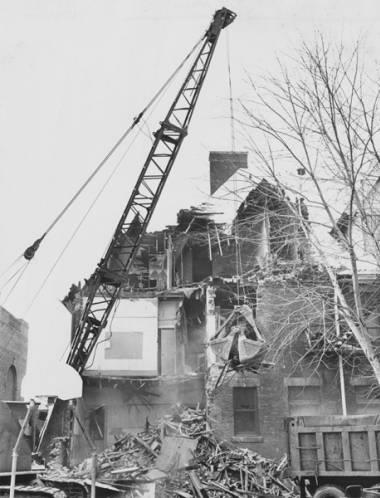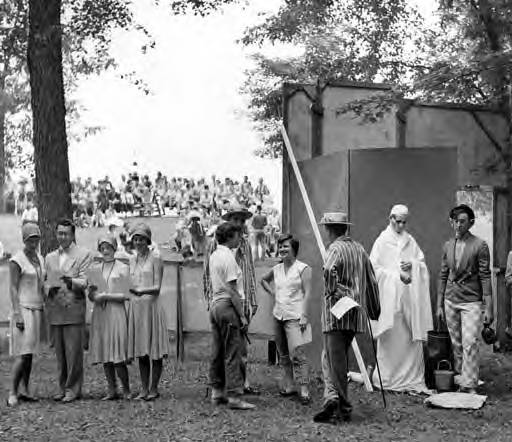Bekah Swope is an MLIS student at Kent State currently completing her work on her practicum. Her project: to digitize subsets of the 1930s and 1960s real estate appraisal cards housed at the Cuyahoga County Archives pertaining to Little Italy's Murray Hill and extrapolate statistics on the streets evolution. In the end, her practicum will involve a collaborative effort between Pursue Posterity, the aforementioned Cuyahoga County Archives, and Cleveland State University.
Paesani. Fellow countrymen; fellow villagers.
Change is a constant in our world—something that is often feared or thought of as a cause for concern. When we consider change as an opportunity to bring about new successes and triumphs, it can become a more welcoming mechanism, though it still can conjure hesitation. We rely on the past to mark notable changes of ourselves, our surroundings, and the greater world. We try to preserve that past from the constant movement of modernity and contemporary change, but a balance must be made for society to function and change as it always will. The past becomes symbolized and condensed, holding memories, stories, emotion. When those living representations of memories are threatened, they can trigger emotions and sentiments of preservation in the name of future generations. As professionals in the memory, history, and information realms, finding a balance and helping to strengthen, recreate (reinvent/reawaken/rediscover), and preserve those links to the past—all the while making them accessible—are our challenges.
As part of this project covering Little Italy, I wanted to focus less on prominent or notable people of the area and dig deeply into the community of Murray Hill. Though the scope of this project is focused from the 1930's to the 1960's, the permeation of time and history forces onlookers to remember to consider things that have happened before a focal time period as well as the subsequent effects. The following snapshots of Murray Hill businesses and organizations not only emphasizes the community that developed after the immigration and establishment of Italians in this Cleveland neighborhood, but it also gives an insight into the skill-sets, professions, and work that the everyday people of Murray Hill did.
The above interactive chart offers us a great deal of information in a condensed form. We can see the changes in businesses that have both sprung up and became discontinued as well as the evolution of the title or type of business occupying an address. Murray Hill School is a constant across this short spectrum of time as is St. John's Beckwith Memorial Church, later St. John's Beckwith Memorial Presbyterian Church*. Murray Hill Hardware & Plumbing Company is followed up by Murray Hill Hardware Company which later houses Pipp's Hardware & Appliance Store, and then Pipp's Hardware & Appliance Company—which comes to occupy two property lots. The Murray Hill Social Club becomes the Italian Social Club. Vitantonio's Funeral Home in the 1950's becomes Vitantonio & Son Funeral Home in 1960's. The Mesi Brothers Bottling Company building in 1940 holds the Tri-County Beverage Distributors Incorporated by 1950, but is no longer listed by 1960. The graph also shows us an increase in the number of businesses and/or organizations during 1960 which is more than double that of the previous years.
As part of this project covering Little Italy, I wanted to focus less on prominent or notable people of the area and dig deeply into the community of Murray Hill. Though the scope of this project is focused from the 1930's to the 1960's, the permeation of time and history forces onlookers to remember to consider things that have happened before a focal time period as well as the subsequent effects. The following snapshots of Murray Hill businesses and organizations not only emphasizes the community that developed after the immigration and establishment of Italians in this Cleveland neighborhood, but it also gives an insight into the skill-sets, professions, and work that the everyday people of Murray Hill did.
The above interactive chart offers us a great deal of information in a condensed form. We can see the changes in businesses that have both sprung up and became discontinued as well as the evolution of the title or type of business occupying an address. Murray Hill School is a constant across this short spectrum of time as is St. John's Beckwith Memorial Church, later St. John's Beckwith Memorial Presbyterian Church*. Murray Hill Hardware & Plumbing Company is followed up by Murray Hill Hardware Company which later houses Pipp's Hardware & Appliance Store, and then Pipp's Hardware & Appliance Company—which comes to occupy two property lots. The Murray Hill Social Club becomes the Italian Social Club. Vitantonio's Funeral Home in the 1950's becomes Vitantonio & Son Funeral Home in 1960's. The Mesi Brothers Bottling Company building in 1940 holds the Tri-County Beverage Distributors Incorporated by 1950, but is no longer listed by 1960. The graph also shows us an increase in the number of businesses and/or organizations during 1960 which is more than double that of the previous years.
The chart allows us to see the variety of businesses and organizations in a specific cross-section of time as well as when it is taken altogether. From these pieces, we can develop an understanding of the evolving community year-to-year and over time. The daily needs of the people of Murray Hill are met by the department stores, grocers, bakers, and barbers, junior orchestras and fine art studio. Restaurants and funeral homes, clubs and churches, beer wholesalers and dry cleaners all offer an insight—and, perhaps, a link—between the daily lives of the past and ourselves.
* In 1963, shortly after the time span of this chart, the church property is sold after a final dissolved session.
* In 1963, shortly after the time span of this chart, the church property is sold after a final dissolved session.


 RSS Feed
RSS Feed
